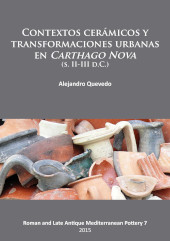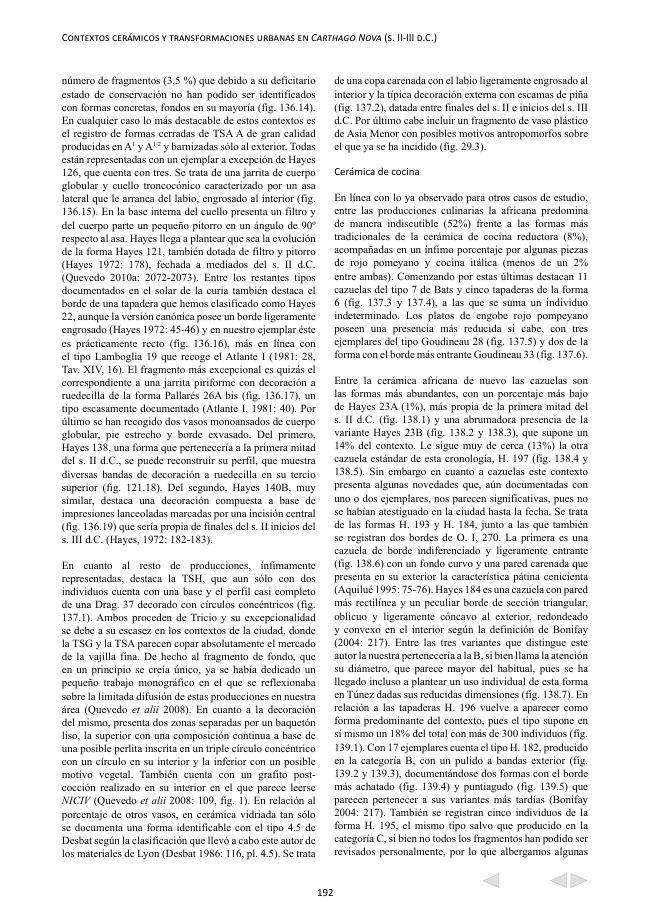2015 - Archaeopress Publishing
E-book
Digital Version
Download | Copy/paste | Printing
Contextos cerámicos y transformaciones urbanas en Carthago Nova (s. II-III d.C.)
400 p.
- The transition process of the Roman city between the Early Roman period and Late Antiquity is difficult to understand due to the absence of urban models and the decline in epigraphy. The transformations that accompany this period are detectable in the western provinces of the Empire from a very early time. Their interpretation –crisis, mutation, etc.– varies with each study case. Ancient Cartagena (Hispania Citerior) is a paradigm of these changes. Starting under Marcus Aurelius, the city began to show symptoms of exhaustion, at the same time as literary and epigraphic evidence began to decline, until it disappeared altogether. In these pages we aim to contribute –and at the same time vindicate– an approach to discovering more about the 2nd and 3rd centuries AD based on the archaeological record and taking into account the stratigraphic sequences and especially the pottery material culture. The compiled documentation begins with a triple vocation: to serve as an instrument for dating; to provide quantified da
- ta about Carthago Nova's patterns of consumption, way of life and trading links; and to understand the evolution of the city in a period from which the urban model of the Late Period emerged. Spanish text with English summary. [Publisher's text].
- Illustrated throughout in colour and black & white.
-
Information
ISBN: 9781784910556
DISCIPLINES



